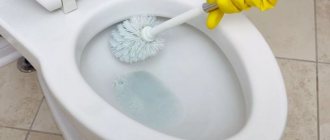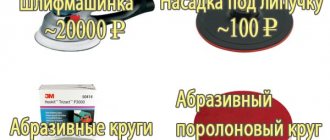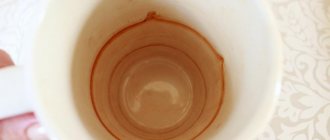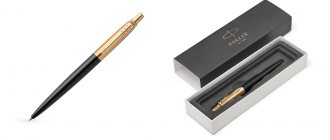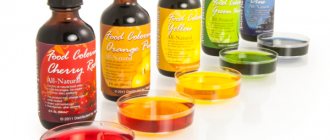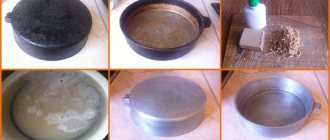To prevent the spread of unpleasant odors in the restroom, most people today use special hygiene blocks for toilets. Unfortunately, such accessories are quite expensive. Therefore, many people in Russia are smart and save on such accessories without compromising the cleanliness of the bathroom. One day, my husband came across such an interesting life hack on the Internet, which he put into practice.
Anti-odor toothpaste
It is believed that expensive hygiene units in the bathroom can be replaced with regular toothpaste. In any case, there are many positive reviews on the Internet about such a homemade air freshener. Toothpaste can not only remove odors from earthenware appliances, but also disinfect its walls. Of course, cleaning the toilet with household chemicals when using paste will remain a mandatory procedure. But there will be fewer microbes on the walls of the plumbing during its operation.
Why do they put pasta in the tank?
Many Internet users claim that this variety is much more effective than the usual one.
According to those who use this life hack, this is a good and cheap alternative to a traditional air freshener. Menthol, when mixed with water, completely removes unpleasant odors, and the combination of sodium, potassium and fluorine contained in the paste prevents the formation of plaque on earthenware or ceramics.
Some even argue that toothpaste also “polishes” the toilet due to the presence of abrasive particles in the composition. That is, microcracks do not form on the surface, but it is from them that plaque begins to form.
What you will need
So, how can you make a cheap analogue of a hygienic block from paste with your own hands? In order to make a homemade air freshener, take, in fact, the paste itself, a string and an awl. Sometimes on the Internet you can read advice about piercing a tube with a needle. But in this case, the paste from the tube will subsequently be washed out in insufficient quantities (if it is washed out at all). Therefore, it is better to use an awl when making a freshener.
For making a homemade air freshener, use exclusively mint and very fragrant paste. The tube itself must be plastic. During the operation of a homemade fragrance, the metal one will begin to oxidize and rust, which will not have a very good effect on the plumbing. It is also believed that gel paste is not suitable for making a freshener. Make an accessory only from ordinary material. Otherwise, your disinfectant will run out too quickly and you will not get any savings.
How it works?
The idea is to make a lot of holes in a closed tube and put it in the tank. The next day it will become limp, and the contents, gradually being washed out of the package, will smell fragrant with freshness with each rinse. This effect can only be achieved with mint toothpaste.
To create mint water, 5 holes are enough.
What about cleansing?
Depending on the composition of the paste, a slight antimicrobial effect can be achieved. For this you need paste:
- with fluorine,
- chamomile extract,
- calendula,
- oak bark.
Important Do not buy paste in a metal tube, as in the drain tank, with constant contact with water, it will begin to oxidize and rust.
Manufacturing process
To make the freshener, pierce the prepared paste tube with an awl in a total of five places (both sides). This number of holes will be quite enough for “mint” water to get into the toilet, and the paste itself will not be washed out too quickly. Tie a not too thick rope to the tube under the cap.
If there is little snow, there will be no harvest: December 16 is Ivan the Silent Day
A Brazilian travels 36 km by bike every day to take his loved one home.
Rare shot: Viktoria Isakova showed her grown-up daughter from Yuri Moroz (new photo)
In the next step, simply open the lid of the toilet tank and throw the tube into it. Place the paste in the tank so that it does not interfere with the movement of the elements of the internal “filling” of the plumbing fixture. Secure the free end of the rope by pressing it with the tank lid. Press the rope against the back wall of the tank. Then its end will not spoil the appearance of the toilet. The rope is necessary in order not to climb into the tank with your hands after the paste in the tube is used up.
What do the experts say?
Experts believe that it is better to clean the toilet using special means.
Experienced plumbers are extremely skeptical about this method of “cleaning” the toilet. Thus, they speak very critically about the paste life hack on thematic forums for plumbers.
Alexander, plumber with 15 years of experience
“An unpleasant odor from the toilet always occurs either due to improper connection or due to plaque on the walls. Toothpaste does not eliminate either of these. So it’s better to use regular air fresheners (there are also those that are placed in the tank), and if the unpleasant smell remains, then call a plumber to check how the toilet is connected to the sewer pipe.”
Vladislav, plumber with 12 years of experience
“I also heard about this method, but I didn’t have to try it personally. The paste will not be able to prevent the occurrence of limestone deposits. And at the same time, it can cause the water outlet from the tank to become clogged into the toilet itself. So this method can cause more harm.”
How economical is all this?
As you know, the cheapest toilet refreshing tablet costs about 35-50 rubles. It usually lasts for 2 weeks. A homemade air freshener from a standard tube of paste works in a tank for about 1.5 months or a little more (in a family home of 2-3 people).
A cheap tube of mint paste, perfect for making a toiletry accessory, also costs about 45-50 rubles. That is, you can really save money when using this life hack. After my husband put the paste in the tank, I managed to save almost 200 rubles in 1.5 months.
Does it actually work?
According to plumbers, it is better to use toothpaste for its intended purpose.
Judging by the comments on thematic forums, this method works, but only partially. Firstly, toothpaste does not dissolve easily in water (it must be thoroughly stirred in warm water). Secondly, toothpaste does not prevent the formation of limestone plaque. Some comments from the forums can be cited in this regard.
Andrey, 32 years old
“Yes, I tried this method too. He pierced the tube with a needle and put it in the tank. A slight smell of menthol was present when rinsing, but the unpleasant odor remained. So a regular air freshener is more reliable.”
Natalie, 42 years old
“When the tube runs out of paste, I simply add water to it and pour it into the tank. After this, the toilet really shines like new! But the procedure has to be repeated every 2 to 3 days. And this is no cheaper than other toilet products.”
Conclusion
This method has the right to life. Of course, it won’t help you avoid buying cleaning products, but you can save a lot on other household chemicals. The paste works great as a freshener. By the way, you can try it if you accidentally bought toothpaste with an unpleasant taste.
It is harmful for people with asthma and pulmonary diseases to inhale the air freshening aerosol, because it contains phthalates, phenols and formaldehyde. These substances are dangerous not only to humans, but also to the environment. Therefore, it is worth adopting a life hack and putting toothpaste in the drain tank.
Even if there are no pathologies, such a freshener is still better for health and, more importantly, does not leave a thin sticky coating or blue stains on earthenware.
Toilet balls
Eco-friendly disinfectant and cheap balls with a light pine aroma can be obtained by mixing the following ingredients:
- vinegar - 2 tbsp. l.;
- powder - 100 g;
- soda - 100 g;
- citric acid - 20 g;
- pine and fir oil - 10 drops;
- water - 30 ml.
Mix vinegar, water and oils in a container. Add powder and citric acid to the prepared liquid mixture and knead thoroughly. For a denser consistency, add soda little by little, stirring constantly until the mixture can be made into balls.
Firing a sauna with pellets: are there any advantages and can a conventional stove be used for this?
Each of the toilet freshener recipes uses natural products that not only freshen the air and whiten surfaces, but are also suitable for preventing and combating light blockages and limescale.
Coca Cola
Coca-Cola is not only a delicious carbonated drink, but also an excellent cleaning agent. Due to its mild acidity, the presence of phosphoric and carbonic acid in the composition, it is used to remove rust, urinary and water deposits on surfaces.
How to use:
- Gradually pour a bottle of Coca-Cola (0.5 l or 1 l) into the toilet, distributing it along the walls. Leave for 1-1.5 hours. Then rub well with a brush and rinse with water. Removes fresh dirt well.
- To get rid of old plaque, follow the following procedure. Pour 2 tbsp. of Coca-Cola into a metal container and heat to +35...+40°C. Gently pour over old yellow spots and leave for 2 hours. Then rub well with a brush and rinse off the product. The surface will shine.
You can use a microwave for heating, but you should absolutely not heat the drink in a plastic bottle or in a hermetically sealed container.
The product does not cope with greasy stains on the inner surface of the toilet or with contaminants in the water.
Is there any reason?
Before starting, I read reviews on the Internet and found out that many were delighted with this recommendation. The opinions of other people helped me get the most out of it and not repeat the mistakes of others.
What's the catch:
- Reviews advise piercing the tube with a needle. But in practice it turned out that this method is far from the best, since the holes are small and the paste is not washed out. That's why I used an awl.
- If you decide to follow my example, be careful, because if the paste has a gel-like texture, then its consumption increases several times, and there will be no talk of any savings.
- The life hack says that the package is enough for 3 months of use. This is wrong. For my experiment, I purchased toothpaste for 50 rubles. The tube contained 70 g of fairly thick paste and this amount was enough for 1.5 months.
- I want to share one more trick. So that after using a toilet life hack you don’t have to fiddle around in the toilet tank, tie a nylon rope to the tube and secure its end with a lid.
Are there any savings?
I didn't have to buy a cube for the tank and a freshener spray. Let's do the math. The cheapest toilet tablet costs about 40-50 rubles. and it only lasts 2 weeks. The price of the air freshener is at least 100 rubles. and in a house where 2-3 people live, the aerosol is consumed very quickly. So, with the help of toothpaste we managed to save 200 rubles.
Liquid product
A liquid freshener with a whitening and antibacterial effect will be made from the following components:
- hydrogen peroxide - 2-3 tbsp;
- essential oil (lavender) - 5-7 drops;
- lemon juice (citrus), can be replaced with citric acid - 3 tbsp. l.;
- liquid laundry soap 72% - 100 g;
- soda - 100 g;
- dry white – 50 g.
Mix all ingredients in a plastic bottle with a dispenser. The finished liquid mixture is poured into a Brefa block or into a drain barrel.
Antibacterial and refreshing toilet soap
When making soap, they use soap remnants, which often remain in every home.
- remnants – 4-5 pcs.;
- glycerin – 1 tbsp. l.;
- Domestos – 50 g;
- soda - 1 pack;
- grapefruit, eucalyptus, tea tree oil 5 drops each.
Grate the soap and melt it in a water bath, add glycerin, Domestos, soda and oils. Mix the resulting mass thoroughly and divide into small pieces, which are rolled into balls. Apply them after 3-4 hours, when they dry.

